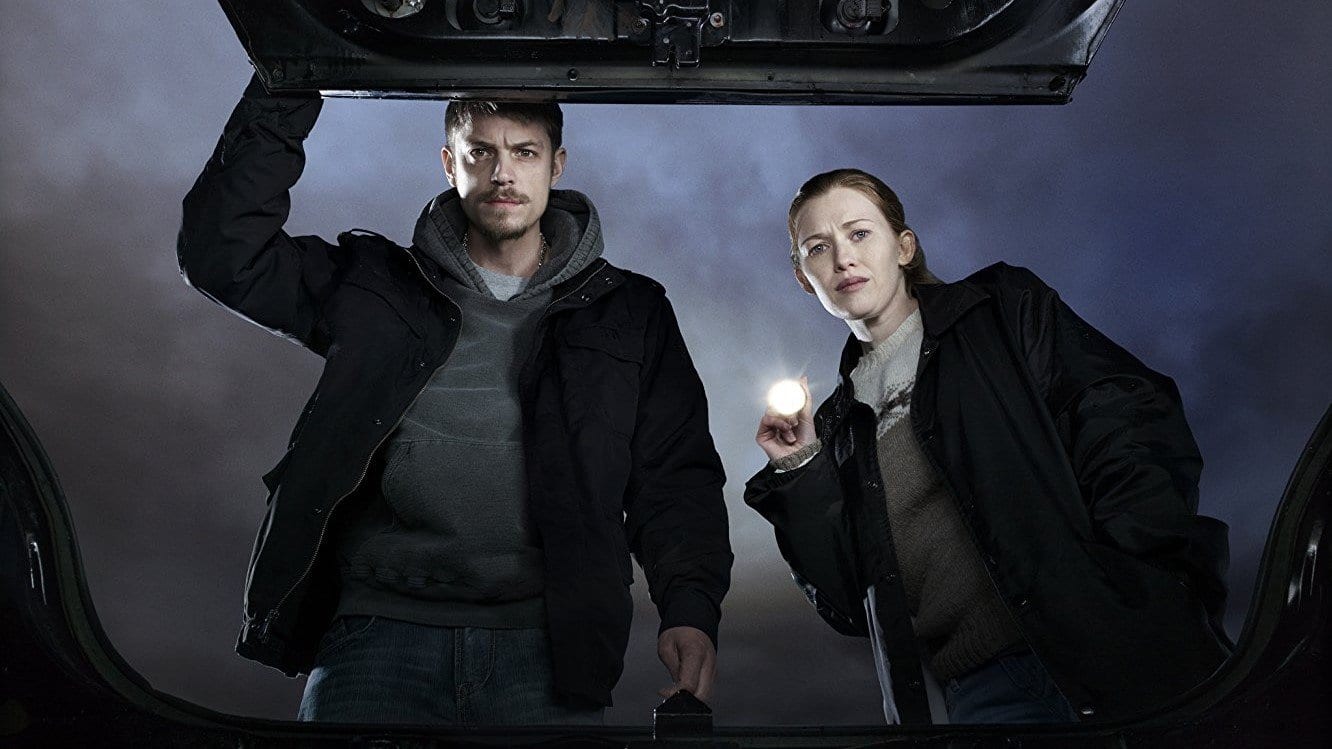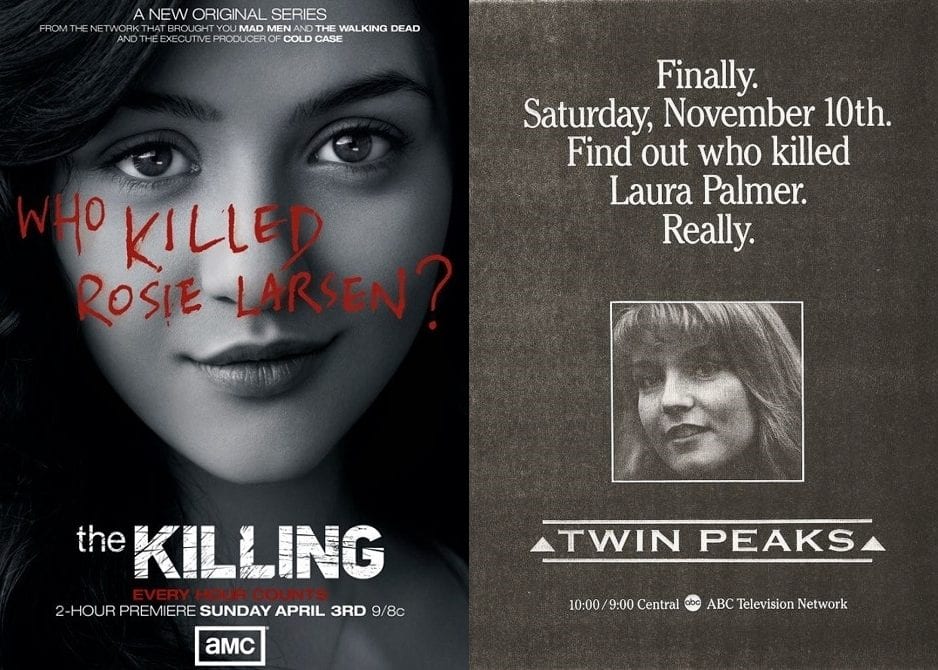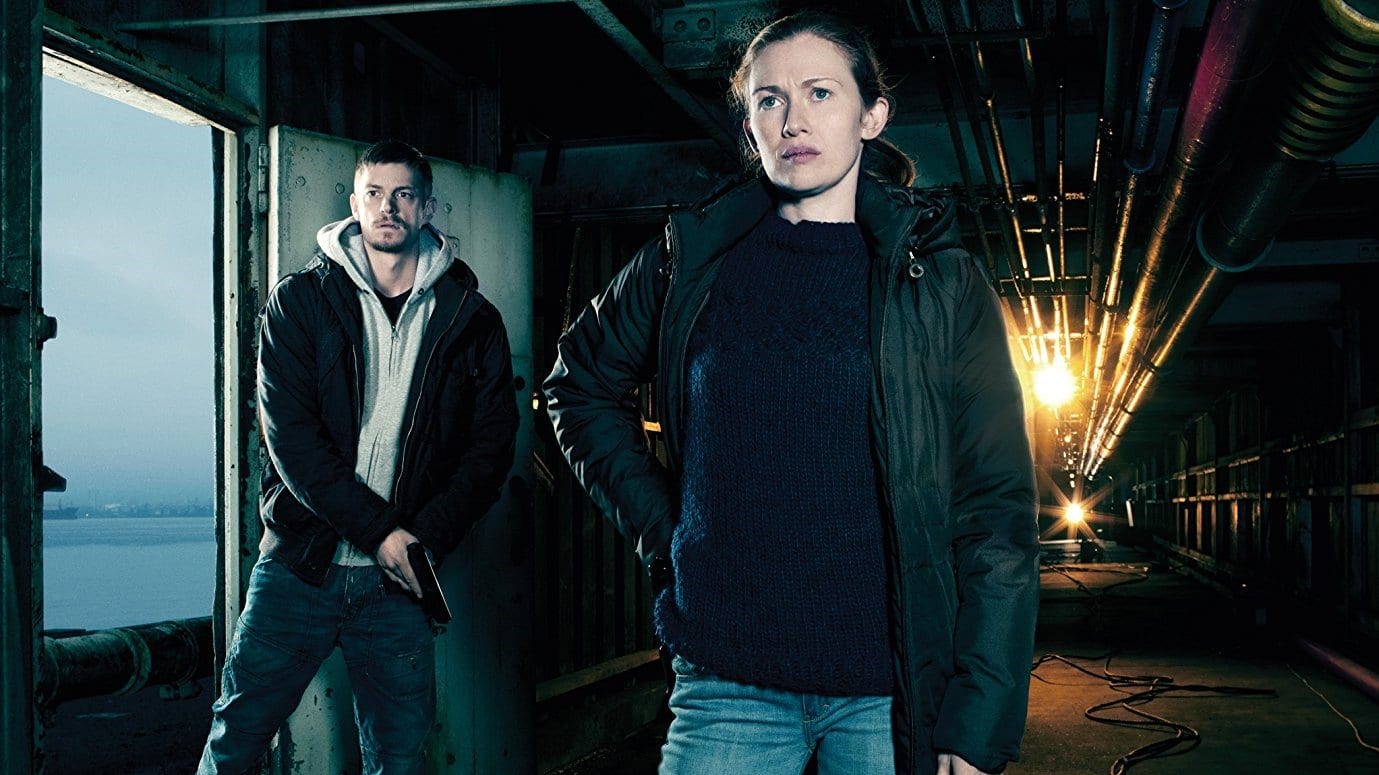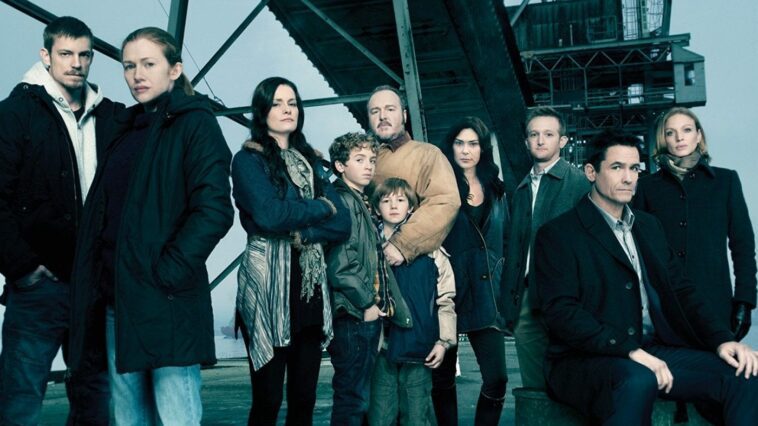So many great shows end on a cliffhanger after being cancelled (yes, even the original Twin Peaks). Very few shows survive cancellation and are lucky enough to be revived on another network. Even fewer shows survive after being cancelled twice (it’s almost unheard of), but somehow The Killing achieved that incredible feat. So, it goes without saying, how much of a miracle it was that The Killing got to conclude its story in an appropriate, meaningful way after four seasons.
Hello, and welcome to “The Autopsy of The Killing.”
This series of articles will explore the world of the American crime thriller television series, The Killing, its relation to its Danish predecessor, Forbrydelsen (The Crime), and its many similarities with Twin Peaks and Twin Peaks: Fire Walk with Me. Despite its likeness to Mark Frost and David Lynch’s masterwork, “The Autopsy of The Killing” will not simply be about The Killing vs. Twin Peaks vs. Forbrydelsen. I have no interest in comparing the three shows to decide which one is better. Instead, The Killing will be discussed and analysed on its own merit, although I will refer back to Forbrydelsen and Twin Peaks whenever necessary because it’s important to acknowledge their similarities. This series also presumes you have a good knowledge of Twin Peaks, though I will try my best to not spoil Forbrydelsen, as it’s a fantastic show in its own right.
Developed by Veena Sud (Cold Case), The Killing is an American crime thriller based on the Danish police procedural television drama, Forbrydelsen. It lasted for four seasons between 2011-2014, with the first three premiering on AMC (2011-2013), and the final season was released in its entirety by Netflix (2014). During its run, it was nominated for one Golden Globe (Best Actress), and an impressive six Primetime Emmy Awards (including Outstanding Writing, Directing, and Lead Actress). It should also be noted that the pilot was directed by Patty Jenkins (Wonder Woman), and the series finale was directed by Academy Award-winning director Jonathan Demme (The Silence of the Lambs). There are three main cases/mysteries throughout the four seasons of The Killing: the first of which lasts for Seasons 1-2, the second mystery is told in Season 3, and the final investigation takes place during Season 4.
The main focus of “The Autopsy of The Killing” will be about Seasons 1-2, and the question that drives the narrative: “Who Killed Rosie Larsen?” This is not a spoiler, but it obviously means the killer is not revealed in the Season 1 finale, much to the annoyance of many, many people who watched The Killing during its original run. Now, where have I heard that before? The Killing is an atmospheric, slow-burning crime thriller about the murder of a young, teenage girl in Seattle, Washington (the Pacific Northwest), a place populated with people full of secrets and agendas. Sounds familiar, right? Twin Peaks is clearly a huge influence (including a memorable three-episode arc featuring the great Grace Zabriskie during Season 3), but Veena Sud’s drama is much more than just Twin Peaks without the supernatural elements. In fact, The Killing is quite different from Forbrydelsen, too.

Yes, the original mystery of both The Killing and Forbrydelsen focusses on the murder of a young girl, but subsequent seasons feature completely different stories, unconnected to each other. The Killing really did create its own path, using Forbrydelsen as a blueprint, whilst forging its own story with different characters, political aspects, and even a different killer. If you, like me, are the type of person who loves a classic whodunit then The Killing is the show for you. It’s a complex, absorbing and occasionally frustrating show, full of red herrings and diversions that are sure to draw a wide variety of reactions from its audience. But then again, isn’t that the best kind of show? There is nothing worse than boring, uncomplicated, middle-of-the-road storytelling. I want to be excited, challenged, annoyed. If I’m going to dedicate a large number of hours to watching a TV show, I want to be invested in its world, its plot and the characters.
With that being said, I hope this series of articles will appeal to fans of The Killing, both old and new. It doesn’t matter whether you’ve seen The Killing once, twice or perhaps you’ve never even seen a frame of footage because I’ll be starting at the very beginning. Think of this series as a weekly, written version of one of your favourite rewatch/recap podcasts. So, before we officially start the show, let’s look at the marketing campaign for The Killing, specifically detailing a familiar-looking poster and tagline.

I don’t know about you, but when The Killing premiered in 2011, I was a 19-year-old film studies student, who had never seen an episode of Twin Peaks. So, when this poster for The Killing first debuted, I had no idea about its connection to the historic image used to promote Mark Frost and David Lynch’s killer reveal…there’s definitely an influence, yes? By 2011, I had seen a few of David Lynch’s films, and I was a fan, but Twin Peaks wasn’t really on my radar. Now, to put that into perspective, Twin Peaks wasn’t in the cultural zeitgeist like it is today (definitely not in the UK, anyway). There weren’t dozens of podcasts dissecting every episode and its meaning, the festivals were attended by only the most devoted fans, there wasn’t a British indie pop hit called “Laura Palmer” and the idea of any potential revival was unfathomable. It’s kind of crazy to think that it’s only a few short years later, and we’re living in a world full of Twin Peaks-related goodies at every corner (from toys to books to jewellery, and everything in between).
First off, let’s be realistic for a second: when The Killing debuted in 2011, Twin Peaks had already been off the air for 20 years, but it was still supported by a loyal, passionate, if somewhat smaller following than when it originally launched. “Who Killed Laura Palmer?” was a major TV talking point in the early 1990s, so there’s a chance the marketing team behind The Killing used its likeness to Twin Peaks to their advantage and created an image that would draw comparisons and raise awareness before the two-hour series premiere. Marketing The Killing as a quasi-successor of sorts to Twin Peaks is smart because you’re appealing to an already established fan base with fond memories of the 1990-91 series. It’s like marketing the original Friday the 13th to the audience that loved John Carpenter’s Halloween. On the other hand, it’s also possible they were focussed on marketing The Killing to a younger audience, who had never seen (or possibly never even heard of) Twin Peaks.
Today, it’s similar to the ways in which Stranger Things is been marketed to both older and newer generations, by focussing on the nostalgia factor of the 1980s, whilst also creating its own unique and wonderfully realised world. Personally, even though I was born in the 1990s, I grew up on a steady diet of films from the ’80s, which is why I particularly love Stranger Things and the decade upon which it’s based. A TV show like The Killing could be appealing to multiple generations, because it may remind its audience of a show they once loved (Twin Peaks), while also constructing its own original story that engages a younger demographic and is riveting enough to hold their attention. Whichever way, the poster they designed to market The Killing is one that would easily catch your eye and make you curious about watching the show. It definitely worked for me, because I tuned in the night it debuted in the UK and was immediately captivated.
As The Killing originally aired on AMC, it’s an obvious move to promote two of their biggest shows—Mad Men and The Walking Dead—at the top of the image. Seriously, though, was there no room for Breaking Bad? I kid, of course, but it’s a strategic and canny move by AMC. The main focus of the poster and the subject of the story, Rosie Larsen, is placed front and centre, so it’s important to note how the marketing team for The Killing already tell you she is dead, even before the show began. Like Laura Palmer, we won’t get to know Rosie Larsen as a living, breathing character. After the opening credits of the pilot, we have a murdered teen and a mystery to unravel. The poster is simple, yet so very effective. The most striking part of it, in my opinion, is clearly the tagline. “Who Killed Rosie Larsen?” is splayed across the centre of Rosie’s face, in what can only be presumed to be blood. Otherwise, why would you use the colour red? Are they trying to tell us something?

The use of the colour red as a motif can symbolise both danger and/or passion, as well as various other emotions related to the pair mentioned. Think about the iconic poster for American Beauty and the ways in which red is symbolically used throughout the film, specifically regarding Angela Hayes, the character played by Mena Suvari. With that in mind, was Rosie Larsen’s murder a crime of passion? Did she know her killer? Were they related? Maybe I’m reading too much into the colour of the tagline, but many things can be read from such an uncluttered, arresting and eye-catching image. The poster for The Killing also shares some resemblance with the famous “Why So Serious?” images used to promote the Joker’s appearance in The Dark Knight, Christopher Nolan’s sequel to Batman Begins. After all, that movie did pretty well, so if the marketing team were inspired by those images, why not style the poster for The Killing in a similar fashion?
The marketing team behind The Killing really did a great job in creating such an ominous, menacing mood with just the face of a teenage girl and one cryptic sentence. The next article in “The Autopsy of The Killing” will focus on the pilot episode of The Killing, written by Veena Sud and directed by Patty Jenkins, respectively. So, sit back, add The Killing to your Netflix list or crack open that box set, and prepare to dive into the dark, rainy, compelling mystery of “Who Killed Rosie Larsen?” If you enjoyed this article, I want to hear from you! Leave a comment below, and/or give me a follow on Twitter (@JonSheasby), and we’ll continue the conversation over there. But please, avoid posting spoilers, because hopefully there will be people who have never seen The Killing before, and I want them to enjoy the ride as unspoiled as possible. Once an episode has been discussed, then you can talk about it as freely as you like, but until that time…keep the mystery alive.

